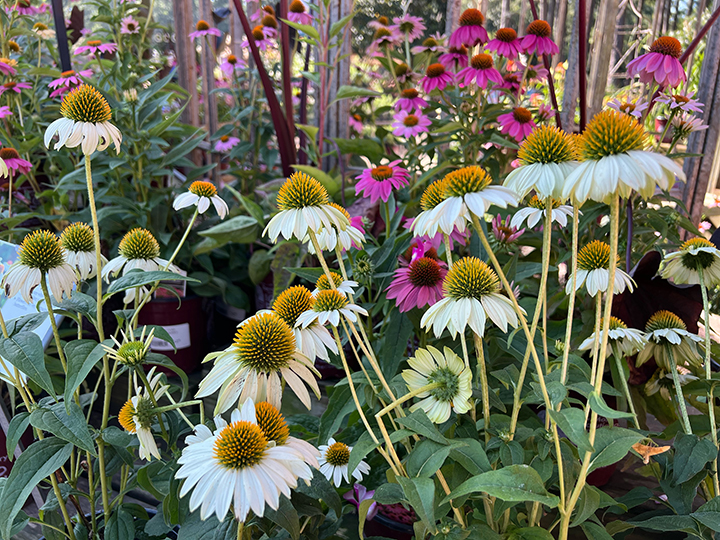Top 5 Reasons to Plant Perennials This Spring!

A perennial can be described as an herbaceous plant whose leaves and flowers die back to the ground every year and come back the next from the root system. However, there are even some evergreen and semi-evergreen perennials! Generally speaking, perennials are desired plants because they produce flowers, seed heads or leaves that add wonderful color or texture to the landscape. And that’s not all; keep reading for the top 5 reasons to plant perennials.
1 Annuals bloom all season but need to be changed out twice a year; once for the warm season, once for the cool season. Unlike annuals, perennials will come back bigger and stronger every year so you get a great return on your initial investment! Creating areas for annuals and perennials in your landscape is a great solution, giving you the best of both worlds, so to speak.
2 Perennials bloom at all different times! Carefully planning your garden to stagger bloom times can give you blooms or foliage interest almost any time of year. For example, right now, creeping phlox, hellebores and candytuft are blooming. Later this spring, peonies will blooming, along with tons of other perennials like baptisia and stokesia. Summer is the season for coneflowers, milkweed and many more. Fall brings on blooming sedums, salvias, agastache and rudbeckias.
3 Many perennials provide food or nectar for bees, butterflies and birds! Let your coneflowers go to seed to provide food for the birds. And read this blog post for more tips on gardening for pollinators; hint… milkweed is a must, and you guessed it, there are several perennial varieties.
4 Perennials are for sharing! There are a whole host of perennials that can be divided and shared, either with other parts of your garden or with your gardening buddies. And it’s not hard to do; read more on this here.
5 There are perennials for sun AND shade gardens! Hardy ferns, heucheras, hostas, astilbe, woodland phlox, bleeding heart, columbine, hellebores and even creeping jenny do well in shady spaces. There are too many sun loving perennials to list, but rest assured, your options are beyond plentiful.
Now that you are convinced that adding perennials to your garden this spring is a must, here are a few tips on planting and growing them. Start by taking a look at your space to see how much sun the area gets and what time of day it gets sun. Part sun perennials do well in morning sun, and dappled afternoon sun while full sun perennials do best with at least six hours of full sun.
Measure your space too! Perennials can look small at first but read the signs carefully… some grow quite large. If you have a big space, consider planting several different kinds of perennials so you get maximum blooms through the season at layered heights.
Most perennials grow best in well drained soil; add organic matter at planting, along with Good Earth brand Jump Start to get those roots established fast. Increase your flower crop by deadheading (removing spent blooms) and fertilizing with a bloom boosting fertilizer before and during the blooming season.
Did you know that we grow most of the perennials you find here? Yup! Just look for our Good Earth pots; that means it’s Good Earth grown. Inventory changes all the time; here is a link to find out what we have available right now.